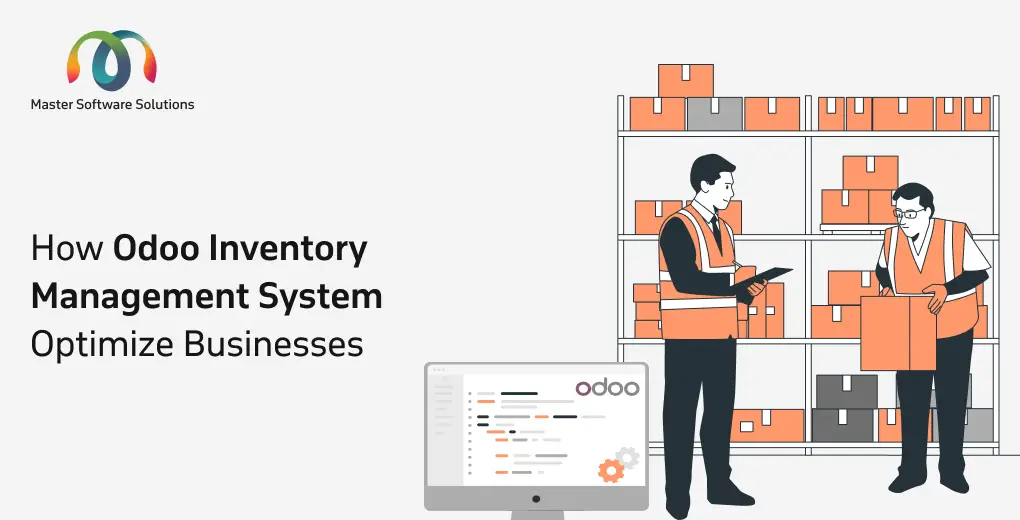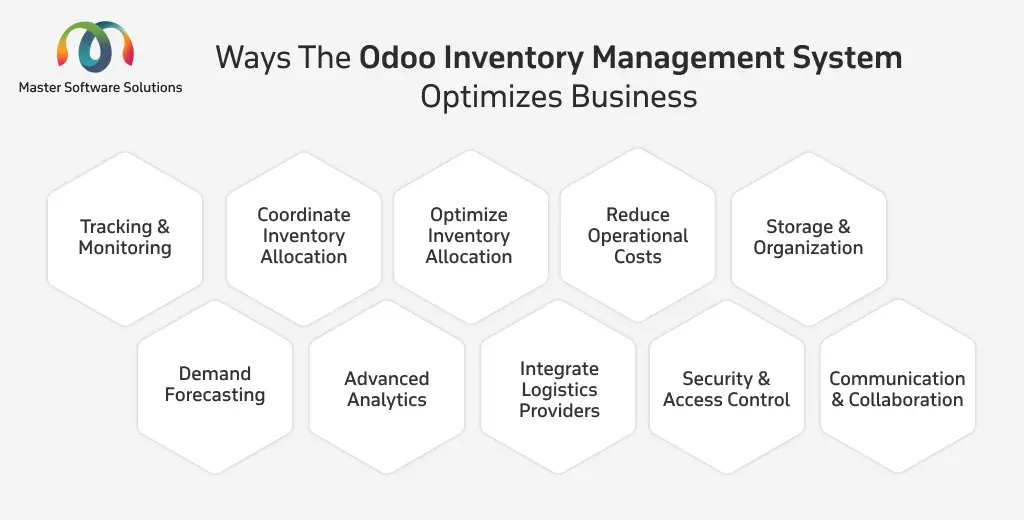Odoo is an enterprise resource planning system that provides powerful and advanced inventory management features to automate processes that can help you optimize your overall supply chain management.
Managing inventory with the Odoo ERP system can help you reduce costs, increase efficiency, and improve customer experience. This blog explores how Odoo can help you manage inventory and optimize your business. Ways the Odoo inventory management system optimizes business:
Improved tracking and monitoring
Odoo offers a live view of inventory levels across all the locations. This real-time visibility lets you know exactly what you have, where it is, and its current status (for instance, available, reserved, and in transit).
You can also track your inventory items in lots and use serial numbers. They are crucial for traceability, especially for perishable items (items that have a shelf life) or required warranties. You can track the movement of specific batches or individual items.
Odoo can automate stock movement and record every stock operation, including receipts, deliveries, and internal transfers.
Coordinate inventory allocation
You can integrate the sales module with the inventory module in Odoo. When the order is placed and confirmed, Odoo automatically reserves the necessary stock, preventing overselling (selling what you do not have).
If your business is large and has multiple warehouses, Odoo allows you to manage inventory levels and allocate inventory efficiently based on demand and availability. You can also define push and pull rules, which automatically trigger stock movements between locations. For example, when the stock falls below a certain level, it automatically pulls from another.
Optimize inventory allocation
Odoo allows you to implement various inventory management strategies, including FIFO (First-In, First-Out), LIFO (Last-In, First-Out), and FEFO (First-Expiry, First-Out). They are the inventory valuation methods, and you can choose the one that best suits your product and business needs.
You can set minimum stock levels to automate replenishment. Odoo generates purchase or manufacturing orders when stock levels reach a certain threshold, preventing stockouts.
The Odoo ERP allows you to define priority shipments based on customer urgency or other criteria for timely deliveries and customer satisfaction.
Reduce operational costs
Accurate tracking and automated replenishment can help you prevent lost sales due to unavailable products and avoid stockouts. Optimizing stock levels reduces the holding costs due to excess inventory, minimizing storage expenses, spoilage, and obsolescence.
Odoo ERP provides advanced sales trends and inventory level data to enable businesses to make informed decisions, leading to better negotiation with suppliers and reduced waste.
Storage and organization
You can define your warehouse structure, which includes zones, aisles, and locations. Defining warehouse areas makes it easier to manage and locate items. The Odoo ERP system allows you to implement Putaway strategies and configure rules, including where the product should be stored. It considers the product category or storage capacity, optimizing warehouse space, and efficiency.
You can integrate third-party devices like barcode scanners to speed up the process, reduce errors, and improve inventory data accuracy.
Demand forecasting
Odoo incorporates advanced reporting and analytical features, which enable it to analyse historical sales data to identify trends and patterns, providing insights for accurate demand forecasting.
Integrating advanced sales forecasts into inventory planning to anticipate future demand and adjust stock levels accordingly. Odoo considers supplier lead times when suggesting reordering to ensure you have sufficient stocks to fulfill your customer demands.
Advanced analytics
Odoo ERP provides inventory valuation reports to help with financials and accounting. You can analyze your stock turnover, which helps you understand how quickly your inventory is selling, identify slow-moving items, and make improvements.
You can track your business’s key performance indicators (KPIs), such as stockout rates, delivery delays, and inventory accuracy, to identify the areas of improvement.
Integrate logistics providers
Odoo supports integrations with various shipping carriers, enabling you to generate shipping labels, track shipments, and manage delivery processes directly from the system. You can send automated shipping updates/notifications to your customers, informing them about their order status.
Security and access control
Odoo offers user roles and permissions features to define roles and permissions for different users to control who can access and modify inventory data and operations. The system maintains and manages the log of all inventory transactions, which provides a clear audit trail for accountability and security.
Communication and collaboration
Inventory management in Odoo is a part of the suite that integrates with sales, purchasing, manufacturing, and accounting, facilitating seamless communication and data flow across multiple business departments.
Relevant stakeholders have access to the real-time inventory information, enabling businesses to make informed decisions and have smoother collaboration.
Conclusion
Leveraging the advanced and powerful features of Odoo inventory management can help you optimize your business operations, reduce costs, improve efficiency, and enhance customer satisfaction. Optimizing inventory includes balancing demand and supply to avoid storage costs and stockouts. Odoo aims to achieve it!
Master Software Solutions is an Odoo consulting company that provides end-to-end Odoo services, including module development, implementation, integrations, migration, customization, and website development. Our services extend to after-sales support and maintenance to ensure minimum downtime and improved performance. If you are also looking to implement Odoo, schedule a call to discuss your business and see how we can help you.

